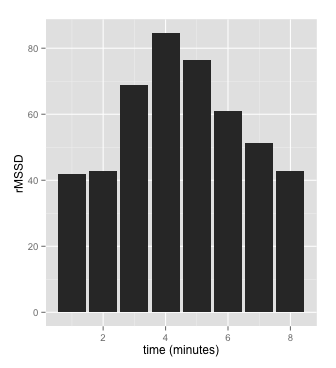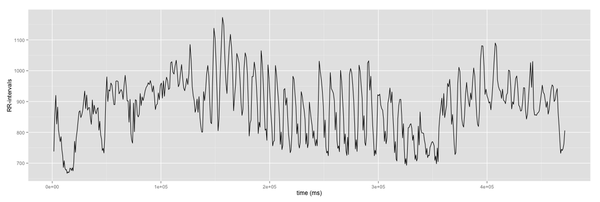|
I've got only a few months per year where I'm relatively happy with my trainings. That's more or less between december and april, when temperatures in Holland are low (I suffer the heat too much). This year I measured my HR and HRV every morning while preparing for a half marathon, and I finally collected enough data to explore the two main aspects I'm interested in tracking while training:
As explained in another post, both changes are somehow related to HR and HRV. So let's have a look at what I've got in about three months of measurements. Hardware & Software
Hardware:
All measurements were taken using either Under Armour's Armour39 or Polar's H7, given the high reliability. I took the measurements right after waking up, while still in bed. Software: I used HRV4Training, with the following settings:
HR & HRV
The only HRV feature I will consider in this analysis is rMSSD, together with average heart rate. There are a lot of reasons why rMSSD should be used instead of other features. Most importantly, its reliability for short duration measurements and the high correlation with training load shown in past research. For more information have a look at Andrew Flatt's and Simon Wegerif's blogs. They are both amazing resources if you are interested in HRV research with focus on training. Getting some perspective on my values
Any physiological parameter is very personal and should always be looked at in relation to our own baseline. While your heart rate can be normalized with respect to your age-predicted maximal, the situation is a bit more complicated for HRV, where there is no predefined range or zones. However I did want to get some perspective on my values, compared to what is out there.
I plotted simulations from my data together with data simulated according to what was reported in literature about rMSSD values [3,4] (this is another advantage of using this feature, since frequency domain features are computed differently by everyone, and even if HF power is also considered a good proxy to parasympathetic activity, it's almost impossible to compare results published in literature).
The distributions are quite wide (published results come from very few subjects, typically in the order of 10). Hopefully soon enough I'll get enough data from HRV4Training to be able to provide better ranges for different populations (age and gender also play a factor here). Anyway for the moment this still shows some meaningful data, since I overlap with the "trained subjects" population, which falls between sedentary and athletes.
3 Comments
|
Marco ALtiniFounder of HRV4Training, Advisor @Oura , Guest Lecturer @VUamsterdam , Editor @ieeepervasive. PhD Data Science, 2x MSc: Sport Science, Computer Science Engineering. Runner Archives
May 2023
|



 RSS Feed
RSS Feed